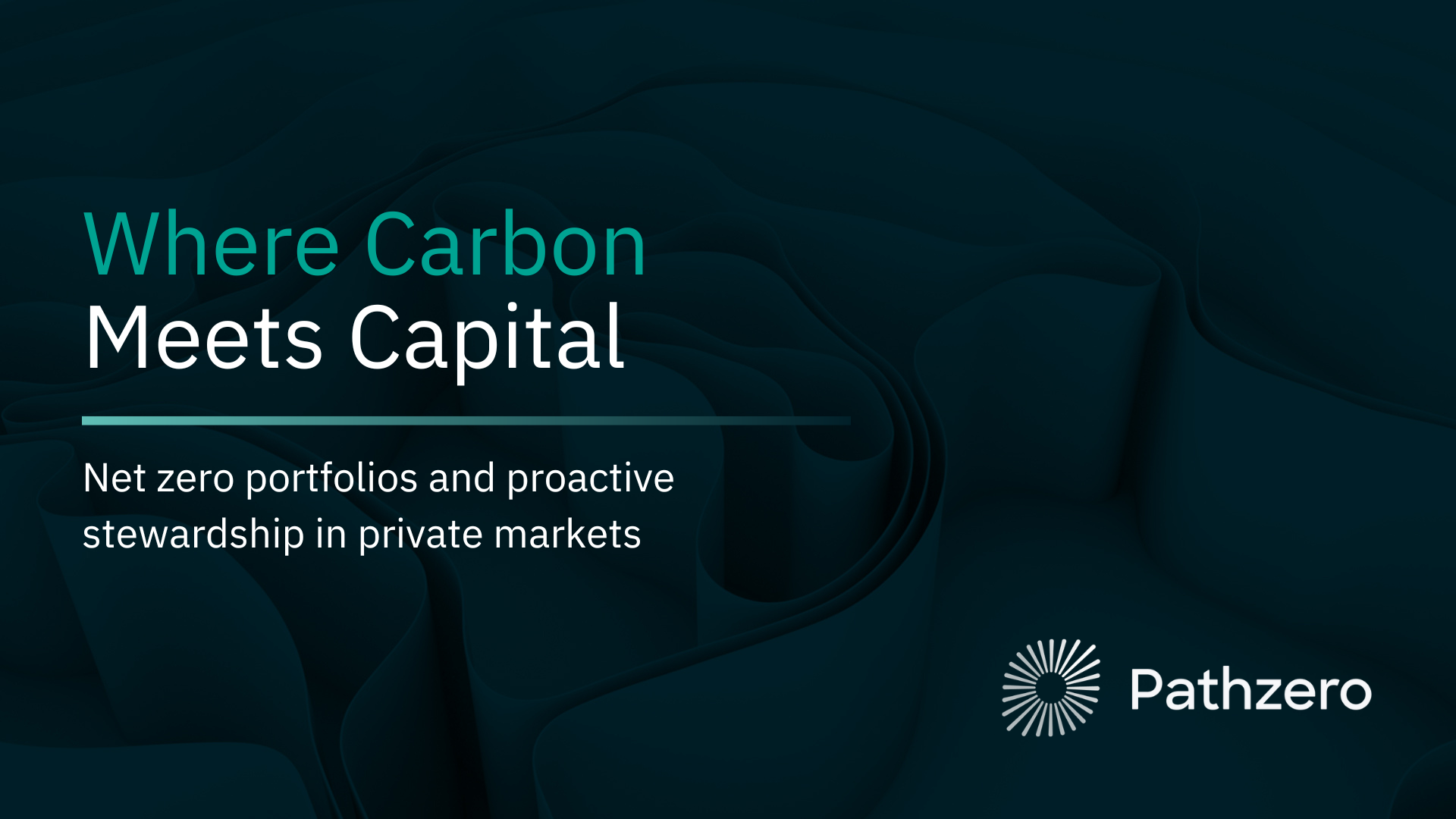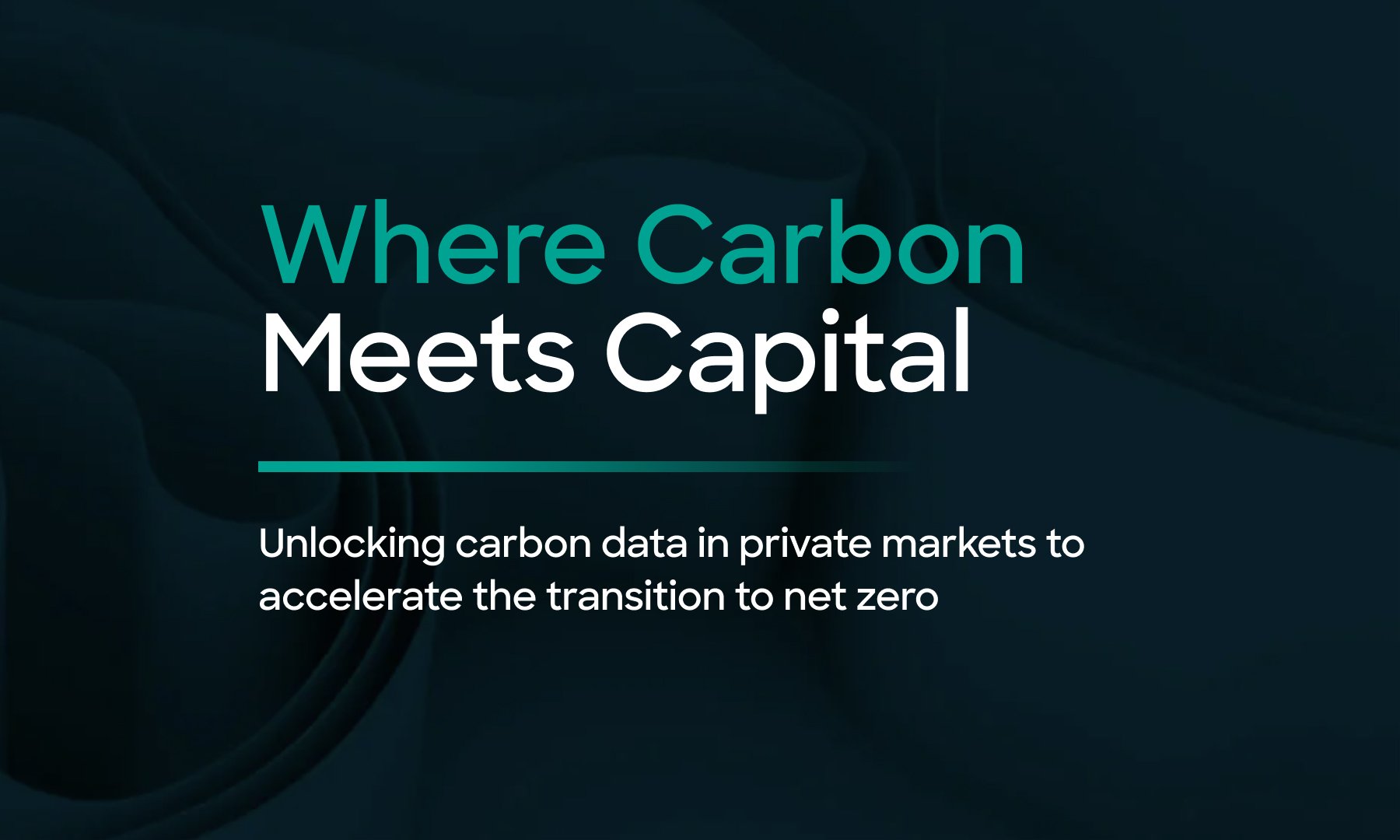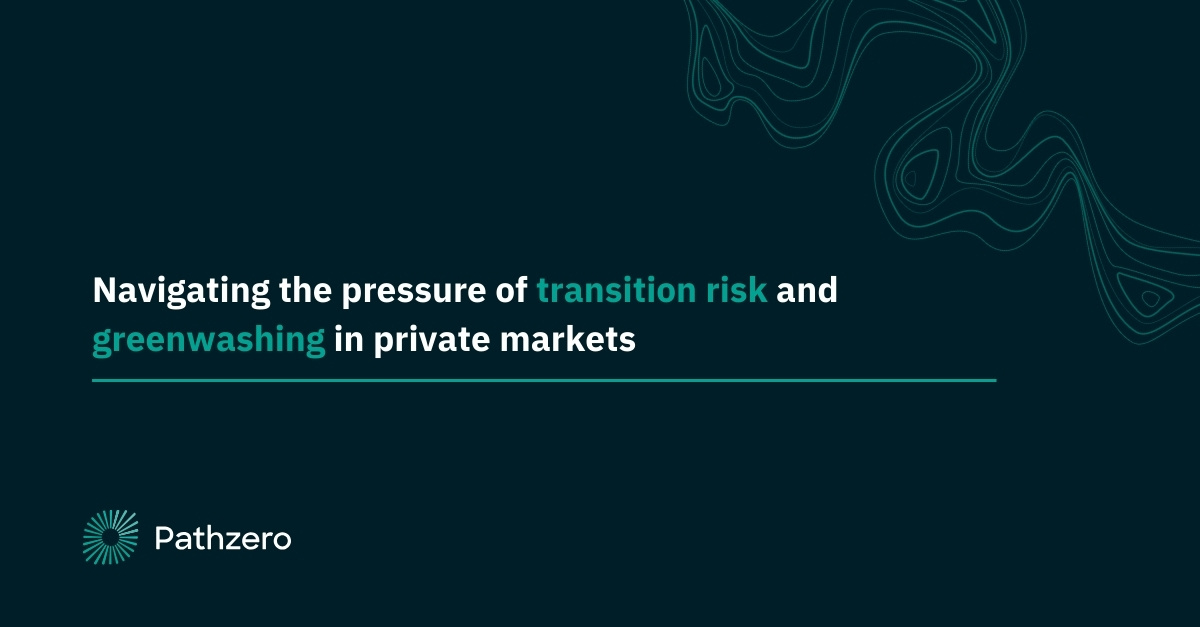A range of financial and regulatory motivations are driving private market investors to reduce their portfolio emissions. To achieve this, one approach is for asset managers to engage with their portfolio companies directly and proactively on climate issues.
Investors can engage with, influence and guide the companies within their portfolio to set and implement net zero or low-carbon ambitions, placing them in a position not only to generate strong long-term returns, but also support the transition to net zero.
In our latest episode of Where Carbon Meets Capital, we sat down with the CEO of the Australian Investment Council – Navleen Prasad – to explore the opportunities of proactive stewardship for private market investors, the unique position of the private market community to influence real world emission reductions, and the role of technology in enabling asset managers to benefit from the transition to net zero.
Climate change is the biggest challenge of our times, and investment managers need to start thinking ahead to remain relevant
“Climate change is probably the most profound disruptive force that communities around the world will have to face this century,” says Navleen.
“For asset managers, the pressures are numerous. There's everything from regulatory risk to having to manage operational risk in portfolio businesses, to meeting the expectations of investors.
And then there's also the legal and reputational risk that comes from greenwashing and from increased community activism. There's also the impact of climate on valuations, and that has a very strong link to the fiduciary responsibilities of asset managers.”
Sustainability expert Christophe Brulliard adds, “It's essential for asset managers to remain relevant in the market and include climate-related considerations in their processes.
There is convergence around climate and ESG in quasi-regulations such as the International Sustainability Standards Board and the Taskforce on Climate-related Financial Disclosures, and very soon, actual regulations that would be enforced in most parts of the developed world. But waiting isn’t really an option.”
Climate change also represents a significant opportunity for investment managers
At the same time, investors are becoming increasingly aware of the investment returns and value creation opportunities from integrating climate risk into their investment life cycle.
Navleen explains that the investment community spends a lot of time talking about the challenges and the risks that come with climate change and probably not enough time talking about the opportunities.
“Beyond preserving value, which is obviously important, the scope to create value is even more immense,” says Navleen.
“When I think about measuring and reporting on climate risk, I think about it as the foundation upon which value creation can be built. That could look like developing new products and services, particularly where markets are willing to pay a green premium. There's also the opportunity for businesses to expand into net zero adjacencies.”
Carl Prins, Co-Founder and CEO at Pathzero adds, “The opportunities from this megatrend are enormous. There will be a period of 10-30 years of immense change in the economy and players will be rewarded for decarbonising processes within their business.”
Investment managers are beginning to recognise stewardship as an effective means to decarbonise their investment portfolios
In response to these market pressures and opportunities, asset managers are beginning to integrate climate thinking into their stewardship activities – actively engaging on the topic with their investments.
This can involve influencing companies within their portfolio to set and implement net zero or low-carbon ambitions.
Navleen explains, “Stewardship is effectively about using investor influence to maximise the long-term value of assets, including economic, social, and environmental ones. It necessitates working with a range of stakeholders, whether that be portfolio businesses, policymakers or service providers.
At its heart, stewardship recognises that managers and allocators of capital have immense influence and with that comes responsibility, not just for investor returns, but also for community outcomes.”
Carl adds, “We’ve seen asset managers who proactively go and work with these companies and set a baseline and implement a transition plan of how this company is going to move in the next 10-15 years as we move to a low carbon economy, really doing well and exceeding in terms of their investment returns.
So, where you're able to actually go in and baseline and put a plan in place, we often see those assets outperforming in an investment portfolio.”
Private market investors are in a unique position to influence their portfolio companies to reduce their greenhouse gas emissions
Private capital invests across almost every sector of the Australian economy. It's highly influential in how privately run businesses can not only meet the challenges of climate change, but also realise some of those opportunities.
“Assets under management across private capital, infrastructure, real estate, and natural resources is probably around $118 billion last year. Of that, private capital – being private equity, venture capital and private credit – was probably about half of that amount. Private capital investment contributes about 3 to 4% of Australia's GDP. That's substantial, and really has the potential to shift the dial”, says Navleen.
Carl adds, “Private market investors have a unique relationship with the assets they invest in, and it can range from very early venture capital days, all the way through to growth equity. They're very involved in the company, they have the means to speak to management to understand the operations of the business, and to have a real input in what happens in terms of decarbonisation. This contrasts with public markets where there's often no direct engagement between the asset manager and the assets they invest in.”
Measuring financed emissions in private markets remains a problem
However, private markets can be complex in terms of ownership structures, reported data and availability of granular information in a consistent and usable format.
This is the complication for private markets – they haven’t traditionally been structured to facilitate transparency, and therefore, it’s not easy for private market investors to know what stewardship activities can and should take place across their portfolios.
Stewardship needs to be based on informed decision making, and the data to inform it simply isn’t there.
Carl explains, “When we look at the coverage of financed emissions reporting in an investment portfolio, we’ve seen great progress being made in the listed side of the portfolio. That's often because those companies are putting out public disclosures and the challenge with using that information is simply about gathering it all together in a way you can use it.
However, in the unlisted side of the portfolio, that public information does not exist. So, what's happened to date is that a lot of proxy information has been used to estimate the emissions.”
Technology is helping to address the data challenge
Fortunately, there have been a number of key developments that are helping to address this challenge – the introduction of common frameworks to measure and disclose information about climate change and particularly emissions, and also technology that's emerging to help standardise and scale the sharing of information.
One of these key industry developments has been the standardisation of methodologies and data quality scoring to help investors understand the emissions profile of their investment portfolio under the Partnership for Carbon Accounting Financials (PCAF) Standard for financed emissions.
The standard is very important because it sets out a clear set of methodologies per asset class that can be applied consistently by various service providers and financial institutions to consistently report the emissions profile of their investment portfolio.
“This has been huge in lifting the industry to a space where numbers become comparable, data quality is understood, and then the real work can begin with decarbonising a portfolio", says Carl.
Christophe adds, “Additionally, with these carbon accounting rules becoming increasingly well understood and established, there's a lot that technology can help with when it comes to carbon. Technology allows us to automate, to collaborate, and importantly, to scale – so we can now do this on a very large scale for lots and lots of companies.”
Collaboration between private market participants will be critical, and technology will be a key facilitator
Technology can also connect market participants – from asset owners to asset managers, all the way to the portfolio companies in order to share valuable emissions information in a way that spreadsheets and emails never could.
“Stewardship for asset managers needs to be based on information, and this information needs to be consistent, readily available, and up to date. And that's where technology can play an important role”, explains Christophe.
“If we enable the connection between the portfolio companies, investment managers and ultimately asset owners, information can flow through a network that both investment manager and asset owner can use to make informed decisions.”
Carl adds, “Asset managers are uniquely placed to play the middle role – the connecting role – between asset owners and portfolio companies, and to create the bridge so that information can flow.”
It's also important to understand that investment managers are in a position to move the understanding of financed emissions from ‘estimates’ to ‘actual’ data by engaging with portfolio companies through technology. This is critical to being able to make informed data-driven decisions and understanding climate-related risk.
“Even if you could perform a really good estimate, you still would not be able to see what plans have actually been put in place at that particular company to decarbonise”, explains Carl.
“Secondly, you would not be able to see how that may have changed year on year as they track their progress. For example, if you have a fleet that's mobile combustion, that's a big source of emissions. If that company has actually switched out to electric vehicles to reduce those emissions, that would not be seen in any estimate that could be created based on proxy information.”
Looking to the future in private capital
Navleen concludes the interview with a parting message, “While climate change is one of the greatest of challenges, I also think of it as one of the greatest of opportunities for private capital. It's not just a means of responding to regulatory or investor scrutiny, but it's also the ability to build a foundation upon which the industries of the future will be built.
Investing in the net zero economy is what private capital is all about. It’s about investing in ideas, businesses and communities now and into the future.”
About the Australian Investment Council
The Australian Investment Council is the voice of private capital in Australia. Its members partner with businesses across every sector of the market to help them grow while supporting their local communities and creating new employment opportunities.



